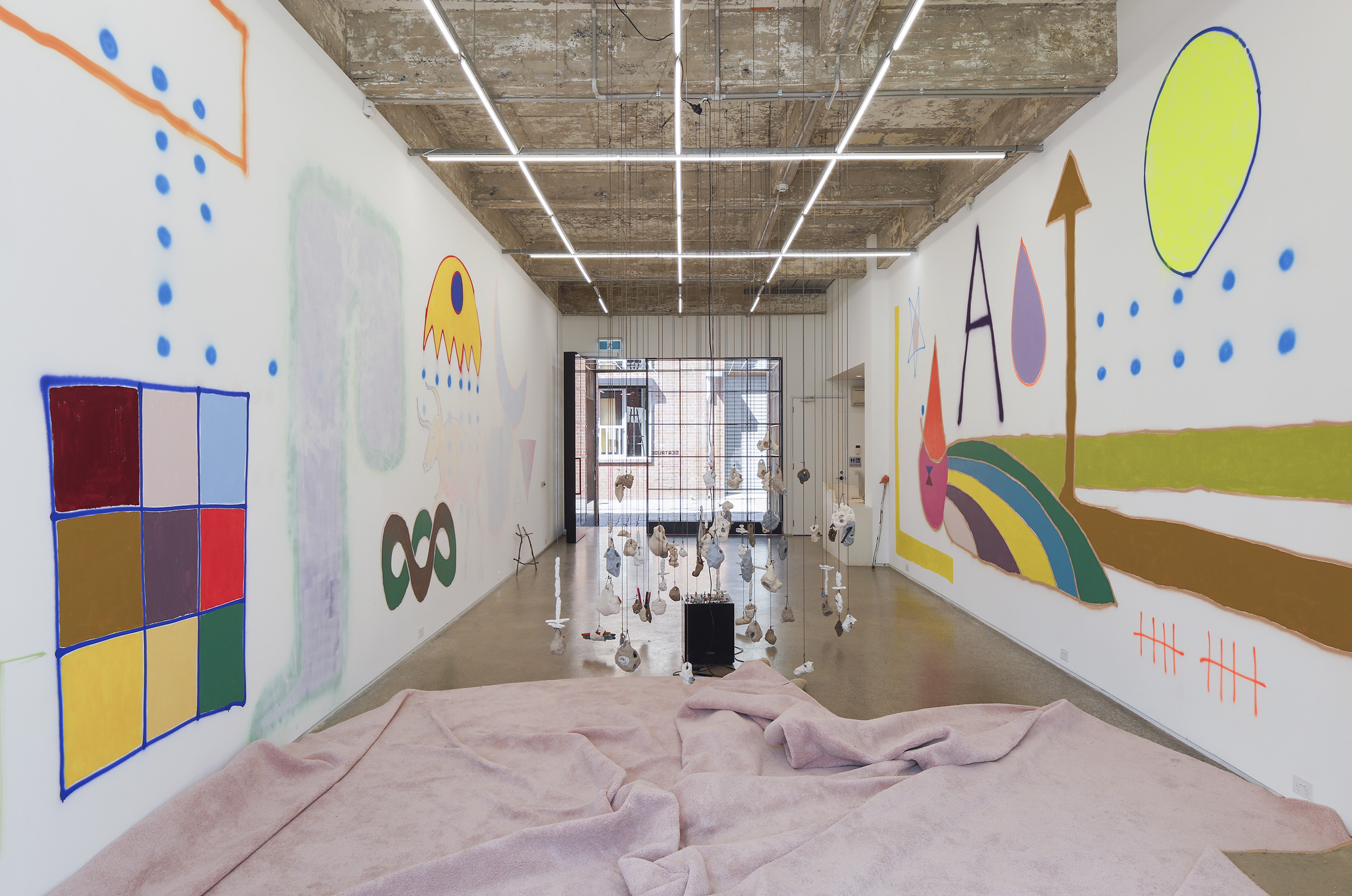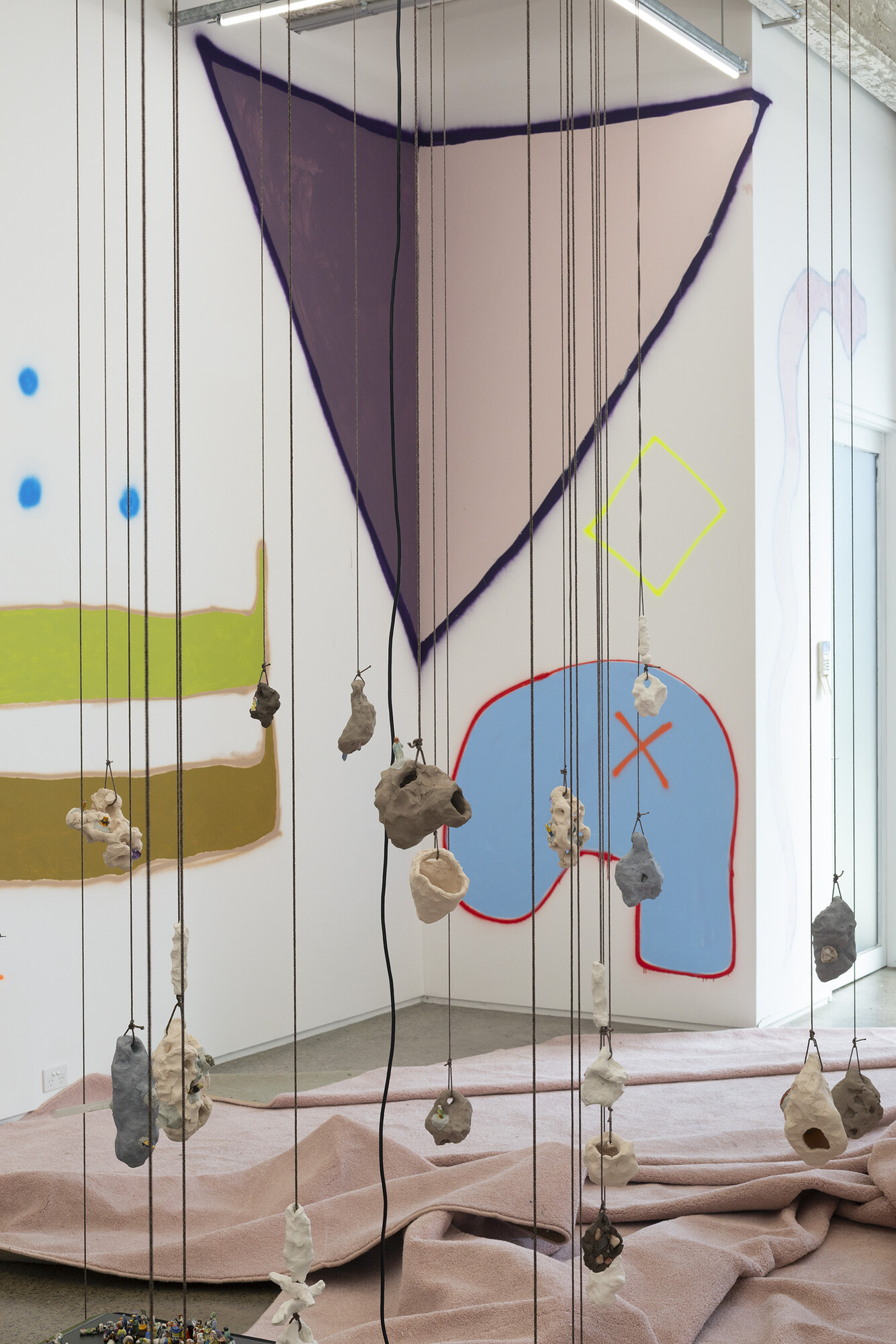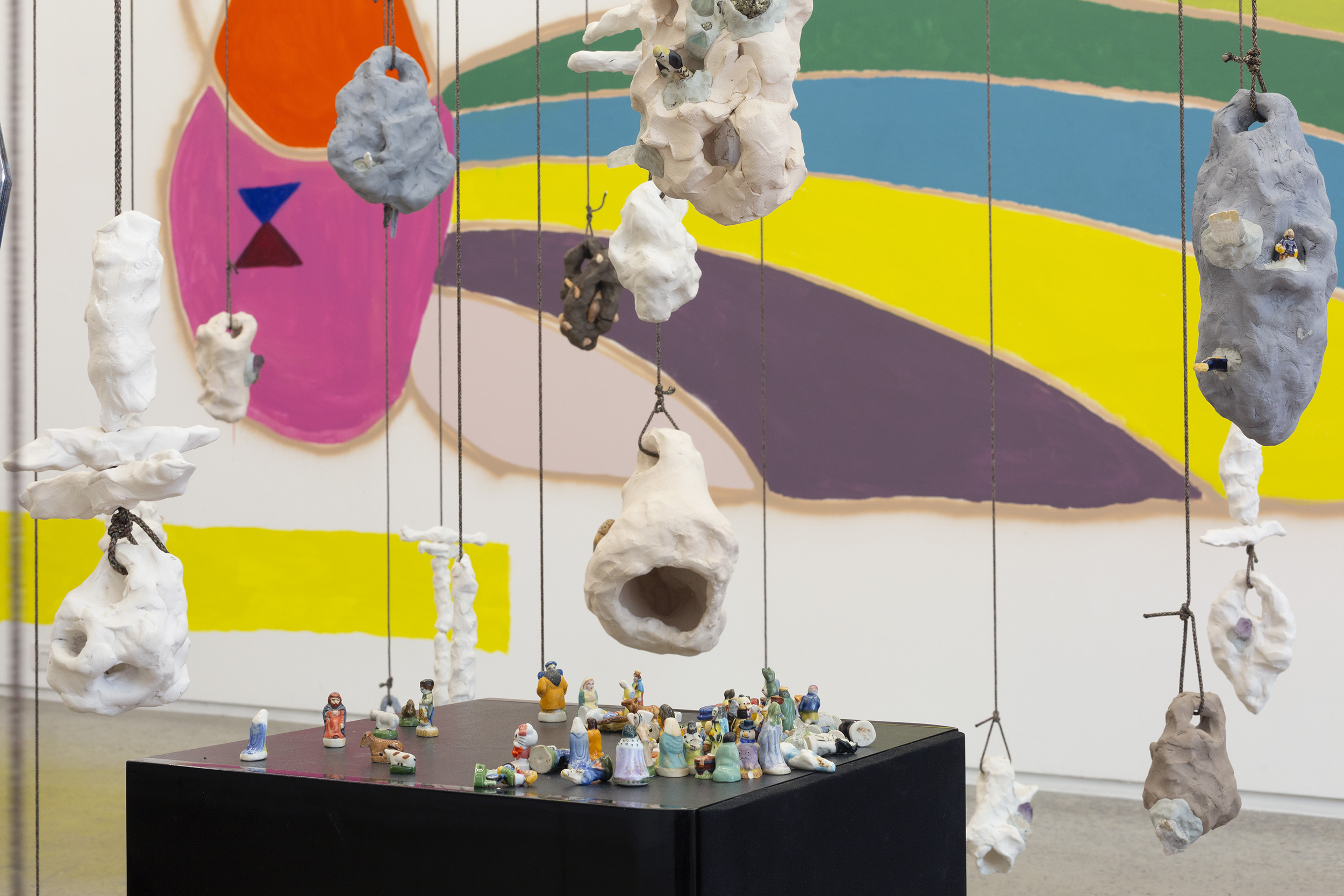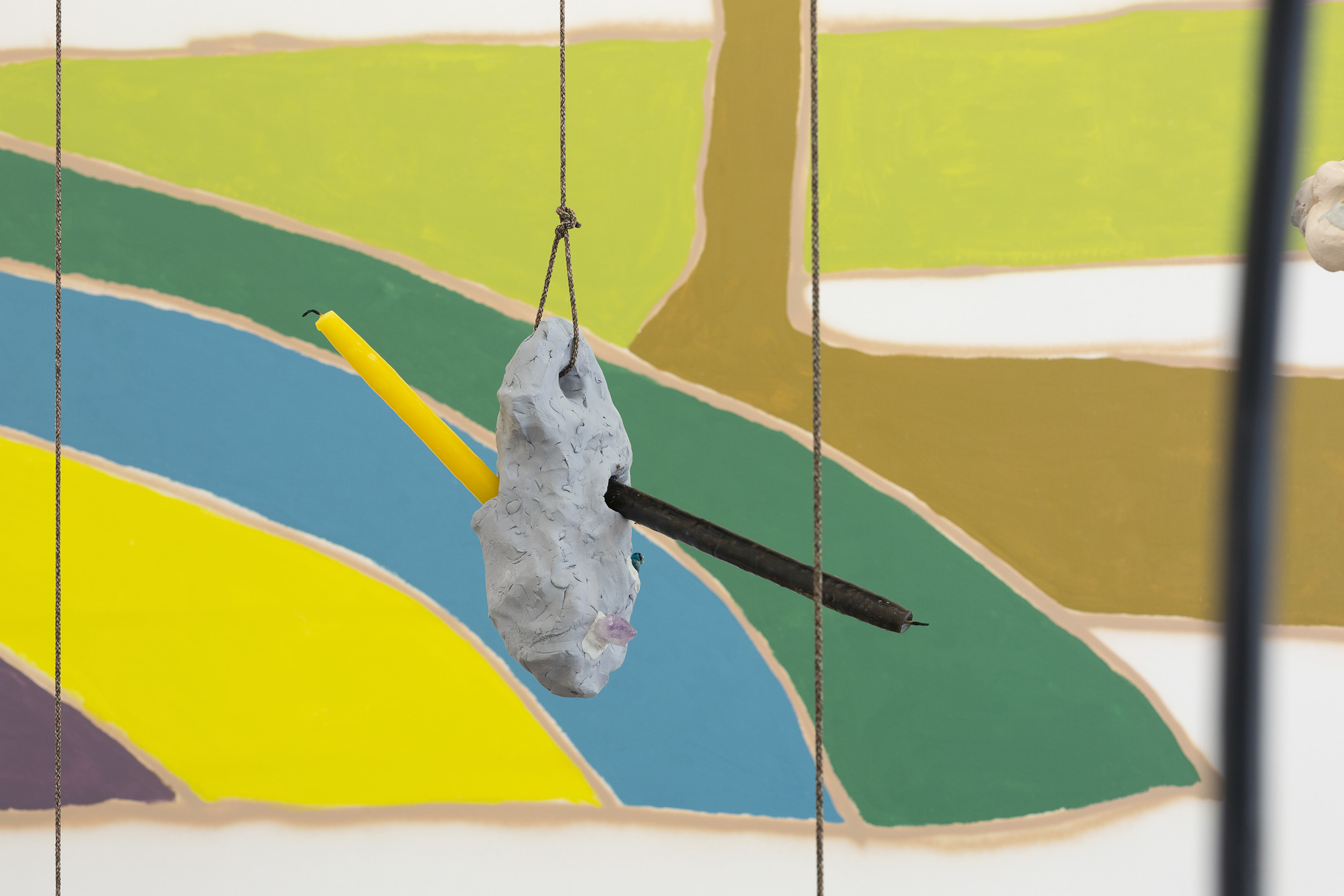La Salle des Taureaux
Anna Parlane
The Paleolithic painted caves at Lascaux in southern France were so wildly popular following their rediscovery in 1940 that within fifteen years of opening to the public they were closed again. The combined exhalations of up to two thousand visitors per day were destroying the fragile painted images. The public’s appetite for an in-person experience of the cave’s mysterious markings was, however, whetted, and popular demand drove a solution that had already gone through successful beta testing in Christianity: replica versions were crafted. As with the proliferation of miraculous and iconic images of Christ and Mary, the repetition allows mass audiences an embodied encounter with the holy mystery.
Following the closure of the caves, full-scale reproductions of key painted caverns were created to satisfy pilgrims visiting the site, and a touring exhibition featuring replicas of the paintings disseminated the Lascaux experience to audiences worldwide. In 2016, another complete walk-through replica of the entire cave system opened as the star attraction of a new museum (with displays, tours, and a gift shop) on site at Lascaux. The latest version of the famous cavern known as “the Hall of the Bulls,” currently on show at Gertrude Glasshouse, is, however, more fan fiction than facsimile. Mikala Dwyer and Paul Yore travelled to Chenaud, France for the 2023 Glasshouse/Stonehouse residency, and in true fan form they diligently visited all the Lascaux cave replicas. La Salle des Taureaux at Glasshouse is a collaborative response to the artists’ six-week residency that picks up on the enigmatic appeal of the original painted caves, but also the reproductive logic that has governed their modern reception.

Dwyer’s mysticism has typically skewed to the occult (her bound stick constructions in this show have a distinct Blair Witch energy, for example), so I was excited to see what would come out of her collaboration with Yore’s Catholic-kitsch sensibility. While La Salle des Taureaux reads very “Dwyer” and largely stays within her repertoire of forms, it is clearly also underwritten by Yore’s Warholian understanding of the link between iconic images and the ritual nature of repetition. The exhibition combines wall painting, sculptural installation, a sound work, and the remnants of an opening night performance that was excerpted from Phillip Adams’s dance work Triptych, originally performed at the FRAME Biennale of Dance in 2023. It is an assemblage of components that have been appropriated, adapted, and synthesised into a queer, pop-shamanic pilgrimage site. Each element refers to the transformation, through ritual re-making or embodied re-performance, of significant images, symbols, and practices over long stretches of time.

The show’s urgent, bassy, thrumming sound work was at full volume for the performance at the exhibition opening, an event which dialled up the social weirdness of performance art even higher than normal. Attendees holding drinks watched politely while dancers Ben Hurley and Oliver Savariego writhed frenetically together on a baby-pink carpet in a prolonged seizure-slash-orgasm-slash-struggle to the death. The fact that their frantic panting and ecstatic movements were a repetition of a previously staged performance somehow didn’t seem to diminish the uncomfortable intensity of the experience. The presence of the pink carpet, however, underscored the reproducability of ecstatic bodily performance: Dwyer and Yore borrowed it from the set of the original Phillip Adams production, which itself riffed off artist Francis Bacon’s psychosexual paintings of frenzied figures in oddly blank domestic settings. Both the sound work (turned down to background volume) and the carpet (savagely mussed up) remain in the gallery, attesting to the exhibition’s status as a site for live embodied experience as well as visual art.

Dwyer and Yore’s collaborative wall paintings similarly foreground their own status as a reenactment by explicitly quoting images from the caves at Lascaux. Like performance, wall paintings also have an event-based temporality. Rather than being imported from the artist’s studio, they are made live in the gallery space, and they are temporary works that will be painted out at the end of the exhibition (a fate that Dwyer and Yore rather theatrically allude to by partially whiting out some elements of their work). True to the exhibition’s title and its namesake at Lascaux, the bull appears as a motif in Dwyer and Yore’s La Salle des Taureaux, however it is shown in the process of evolving into an abstract symbol. As in the historical development of the capital letter A in the Roman alphabet—which began over three thousand years ago as a depiction of a horned bull’s head representing the Phoenician symbol “aleph” (ox)—the bull in Dwyer and Yore’s painted cave metamorphoses into a series of letter forms and triangles. These include a new iteration of Dwyer’s long-running series of wall paintings titled Spell for Corner. Given its delicate pink and purple hues, this version of Dwyer’s Spell also reminds me of ACT UP’s pink triangle that has come to represent histories of LGBTQ oppression and AIDS-related activism and frequently appears in Yore’s works.

Dwyer’s trademark lumpy sculptural abstractions, hanging in the centre of the room, also have the look of accretions that have built up over time. They have become vehicles for votive offerings, supporting crystals, burnt candles, and tiny figurines of popular contemporary saints (Spider-Man, nativity figures, a Star Wars X-wing, a blue-cowled Virgin Mary, Krusty the clown). These, as the list of materials on the show’s room sheet informs me, are fèves, and they strike me as evidence of Yore’s magpie eye. Fèves (French for fava beans) are small ceramic figures traditionally baked inside a Gallette des Rois, or King Cake, to celebrate King’s Day on 6 January. In Western Christianity, King’s Day or Epiphany is a feast day marking the end of the Christmas period and the moment in which the infant Christ was revealed to the Magi. The fact that Epiphany overwrites the pagan festival of the winter solstice, Saturnalia, is evident in the New Orleans Mardi Gras (which kicks off on January 6), and also in the tradition of the King Cake with its hidden fève. Whoever finds the figure in their slice of cake is named king or queen for the day, explicitly recalling the riotous social inversions of the carnival of Saturnalia in which a “Lord of Misrule” would be appointed to direct revellers to perform ludicrous or hilarious acts. A small army of fèves are now available for purchase on Etsy.com, as globalised digital entrepreneurialism steps in to facilitate the continued living transformation of this folk-religious tradition.

Dwyer and Yore knowingly deploy multiple, layered historical references in La Salle des Taureaux, which all have to do with the transformation of iconic forms and ritualised bodily experience. The exhibition is, however, dominated by one image in particular, which (despite the exhibition title) doesn’t appear in the Hall of the Bulls at Lascaux. The large bird-human figure that lies prone across the full length of one of Glasshouse’s walls, seemingly deceased except for its substantial arrow-shaped erection, reimagines a similarly enigmatic figure from Lascaux’s notorious painted “shaft scene.” One of the most analysed paintings in the cave complex, the shaft scene’s imagery centres on a prone bird-human figure with a prominent erection, a bison seemingly in the throes of violent death, and a curious bird-headed staff. The potential narrative connections between these elements have inspired feverish and inconclusive speculation over the years by both amateur and scholarly commentators (the corpus of literature includes the 1955 book by Georges Bataille, of course).
Adding to its air of mystery, the shaft scene was executed in a particularly inaccessible area of the cave complex. In his article “Hunters and Shamans, Sex, and Death: Relational Ontologies and the Materiality of the Lascaux ‘Shaft Scene,’” archaeologist Robert Wallis makes a case for the painting’s relationship to the interwoven shamanic and hunting practices that, he argues, would have been used to manage the vital forces of death, sex, hunting, and consumption in Paleolithic culture. Observing that the bird-headed staff depicted in the painting strongly resembles animal-headed staffs used by Siberian shamans, he also describes how the painting would have been produced in a state of altered consciousness.
The artist who painted the shaft scene clambered several metres down from the floor of the preceding cavern (the “apse”) to produce their work in an unusually cramped, dark, narrow space. “This was no straightforward art-making,” Wallis writes, “but one which involved an intense material environment which bombarded the senses of the maker with various transformative effects.” Not only is this part of the cave a particularly low-oxygen environment, the artist would have been working in the smoke and flickering light of a lamp flame and also with the psychoactive effects of the manganese dioxide paint pigment that they sprayed from their mouth to produce the work. Wallis also notes that a reindeer antler baton shaped like the drum-hammers used by Siberian and Saami shamans was found below the painted scene, suggesting that the artist may have worked alongside a percussive soundtrack which “would have echoed around the chamber … magnifying the altered sensory experience.”

Despite the presence of the sculpted bird-headed staff (left casually propped against the wall, as if the shaman has just nipped out for a coffee) and the percussive bass-heavy soundtrack, Dwyer, and Yore’s pop-bright paintings in the clean white space of Glasshouse are a world away from the smoky, trippy, dangerously claustrophobic gateway to the spirit world that Wallis describes. La Salle des Taureaux repeatedly refers to intense transcendent experience, but the colours in the wall paintings read like a trendy interior design palette, or a corporate collab with Gorman. On the one hand, I’m tempted to mourn the white cube’s inability to facilitate the kind of affective engagement that Dwyer and Yore’s show clearly wants: one in which material and visual culture have vital significance in the emotional and spiritual lives of those engaging with it and inspire a genuinely passionate response. Despite the best efforts of those involved in participatory and socially engaged art practice, art viewers (unlike Mardi Gras attendees, pagans, and Catholics) have been trained to observe from a polite distance.

On the other hand, I kind of love the sheer weirdness of Dwyer and Yore’s odd collection of haunted forms and images, and their willingness to play with material that has long (sometimes very long) cultural roots. The fact that their show is articulated in the contemporary language of popular consumption simply affirms that the continuous churn of repetition and metamorphosis in human culture is still underway and the deep past echoes through the here and now. We’re all already participating in ancient mystical cults whether we know it or not.
Anna Parlane is a lecturer in art history and theory at Monash University.


